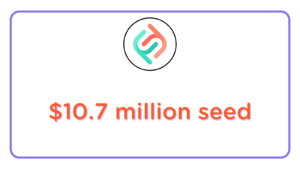When the pseudonymous Satoshi Nakomoto invented Bitcoin in 2009, it was intended to function as a new system of electronic cash.
Blockchain technology, the database on which Bitcoin runs, enabled the Bitcoin network to function without needing intermediaries like banks and governments to assist.
However, since Bitcoin’s release over a decade ago, developers have discovered applications for blockchain technology outside of the financial sector.
These discoveries enabled them to create new forms of tokens for purposes other than currency.
Below, we’ll go over the many different types of crypto tokens outside of cryptocurrencies and what they are being used for.
Utility Tokens
Utility tokens are crypto tokens meant to be used within a specific ecosystem.
Whereas cryptocurrencies can be used for purchases at any type of institution that accepts them as payment, utility tokens can only be used within the networks that built them.
One popular type of utility token is the fan token.
Developed by the company Socios, fan tokens are utility tokens that holders can use to access a distributed ledger with fan benefits within an organization. Fan tokens can provide access to limited-edition merchandise, tickets to events and shows, and voting rights for official team decisions.
Security Tokens
If cryptocurrencies represent cash, security tokens represent shares of value-bearing assets, such as businesses, real estate, and alternative investments.
Essentially, security tokens function similarly to stocks and REITs. However, when an investor buys a security token, the transaction records proof of ownership in the blockchain Ledger.
Yahoo News predicts that the trading volume of security tokens will grow to $162 trillion by 2030.
Their popularity can be attributed to the fact they are relatively low risk. Security tokens have a significant advantage over cryptocurrencies and utility tokens due to their lower volatility.
Because security tokens are tied to assets that have value in their own right, their price does not hinge entirely on supply and demand, which isn’t the case with cryptocurrencies and utility tokens.
Non-Fungible Tokens
Non-fungible tokens (NFTs) are similar to security tokens in that they represent actual assets.
However, where security tokens focus on traditional investments like stocks and real estate, NFTs usually represent media, like visual art, photographs, and even memes.
Buying an NFT creates a ledger entry on the Ethereum blockchain. This permanently records proof of ownership.
Being non-fungible, NFTs cannot be replicated.
The unique signature recorded on the Ethereum blockchain proves an NFT’s status as an original copy. Their irreplaceability gives them their value — because demand rises while supply cannot, NFT prices can increase significantly.
Governance Token
According to a Digiday look at DAOs, blockchain technology has the potential to ensure that organizations can run democratically.
Decentralized autonomous organizations (DAOs), which are organizations for crypto enthusiasts operating under a shared goal, use tokens called governance tokens to distribute leadership responsibilities fairly among all organization members.
Governance tokens grant DAO members voting rights within an organization. The weight of a person’s vote is proportional to the number of governance tokens they own. In this system, those with the greatest investment in the organization have the most power to influence decisions.
At the end of the day, the future runs on the blockchain.
Its technology has the power to change the way we do things, not just with finance but also with investment, art, democracy, and even entertainment.







